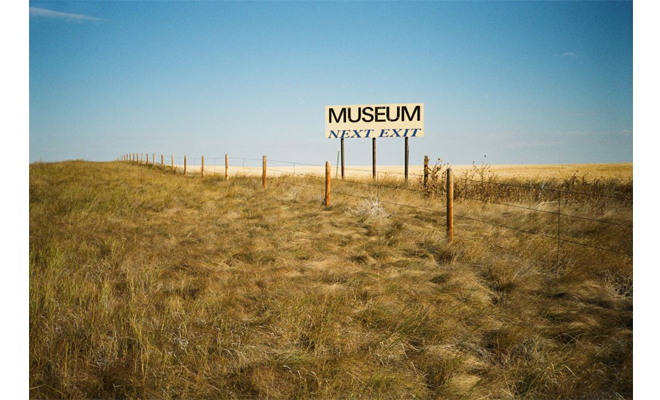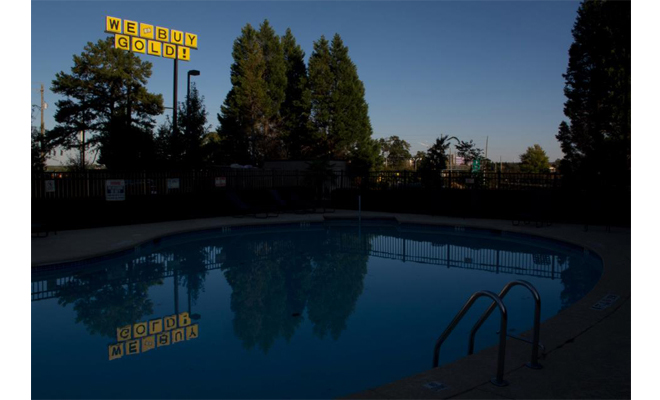Last Call: Alli Miller and Trey Burns at May Gallery
This is the last week to see "Wessel Castle," an exhibition by Alli Miller and Trey Burns, at May Gallery. Before it disappears, Wesley Stokes reviews.

Alli Miller and Trey Burns, Museum Next Exit, 2013. Archival inkjet print with sculptural frame. Courtesy the artists and May Gallery & Residency, New Orleans.
In 1985's Pee-wee's Big Adventure, Paul Reubens stars as the Peter Pan of the late 20th century on a quest to find his stolen bicycle. The journey takes him across the American landscape as seen through the lens of director Tim Burton. From Claude Bell's Dinosaurs at a truck stop in Cabazon, California and biker bars lined with bad dudes to hitchhiking with criminals on the lam and rides with phantom truck drivers, the film paints a lost picture of the American landscape. Offered up to a younger generation, it is the filmmaker's nostalgia for a post-war America that was already in steady decline and could no longer truly be experienced. Late modernism shifted away from these kinds of cultural oddities with super highways that bypassed small towns and roadside attractions. Still its mythology has become a niche commodity with numerous guidebooks, websites, and photography monographs devoted to the subject.
"Wessel Castle," an exhibition by New York-based artists Alli Miller and Trey Burns on view at May Gallery, takes a decidedly different and more contemporary route to discuss the American road. A play on the names of pop artist Tom Wesselmann and the fast-food chain White Castle, "Wessel Castle" observes the uglier side of America's back roads as they are presently—broken, reappropriated, alone, and sad. Multiple photographs of derelict marquees with indecipherable lettering are paired with a collection of photographs of signs that have survived mass exodus only to become mutant landmarks in places removed. One such image shows what was once the iconic yellow block lettering of a Waffle House restaurant revived as a pawn shop sign stating "WE BUY GOLD!" The gallery walls covered in sheets of Tyvek, a commonly used material in new construction and highly visible throughout a daily trek across New Orleans, serve to frame the show. In a similarly industrial gesture, the edges of each photograph’s frame are tipped with the cardboard protective sleeves used for packing—ready to be shipped off or sold on the spot like any other disposable commodity.
The artists couldn't have found a more appropriate setting than New Orleans, a city that in many ways has exemplified the failures of modernism with a decades-long weak economy and high poverty level. And May Gallery, an ex-paper distribution warehouse turned art gallery among an entire building filled with artists studios in construction, adds another (perhaps unintentional) layer to this Tyvek-wrapped framework. It's for these reasons that "Wessel Castle" feels somewhat like a meta-joke, which is hopefully not lost on viewers. Consideration of its punch line right now might well serve New Orleans and America.

Alli Miller and Trey Burns, We Buy Gold, 2013. Archival inkjet print with sculptural frame. Courtesy the artists and May Gallery & Residency, New Orleans.
Editor's Note
"Wessel Castle" on view through March 22 at May Gallery & Residency (2839 N. Robertson Street, Suite 105) in New Orleans. To make an appointment to view the show call 504.316.3474 or email themayspace@gmail.com.



